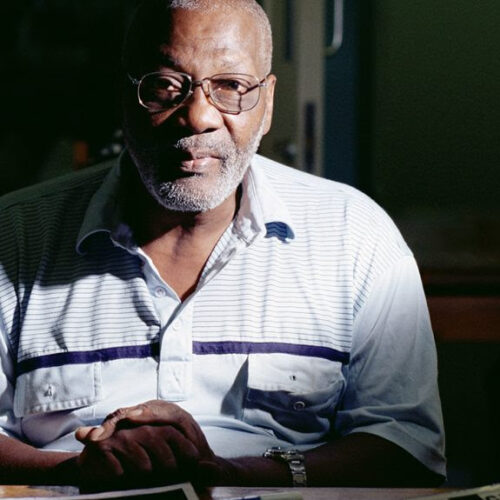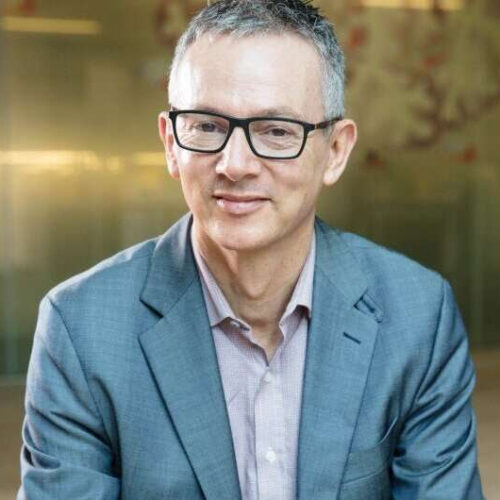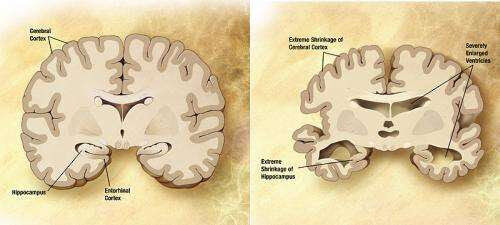by Weber Shandwick Worldwide Credit: Public Domain Alzheimer’s disease (AD), the most common type of dementia, causes the death of neurons and leads to the shrinking of the brain. Patients with AD will eventually experience gradual deterioration in memory, thinking, behavior, and the ability to perform everyday activities. Yet, scientists do not fully understand what causes...
Category: <span>Alzheimer’s</span>
Treating Alzheimer’s: Have we been tackling the right protein in the wrong way?
A new study questions the prevailing theory of how Alzheimer’s disease develops. Image Source/Getty Images The results of a new study suggest that increased protein plaque accumulation in the brain may not affect cognition in the way that experts previously thought. The findings challenge prominent theories regarding the onset and progression of Alzheimer’s disease. This research questions...
One year of aerobic exercise training may reduce risk of Alzheimer’s in older adults
by American Physiological Society Credit: CC0 Public Domain New research suggests one year of moderate-to-vigorous intensity aerobic exercise training improved cardiorespiratory fitness, cerebral blood flow regulation, memory, and executive function in people with mild cognitive impairment. The data suggest improvement in cerebrovascular function from exercise training also has the potential to reduce the risk of Alzheimer’s...
Potential noninvasive treatment for Alzheimer’s disease
by University of Queensland Credit: University of Queensland Ultrasound can overcome some of the detrimental effects of aging and dementia without the need to cross the blood-brain barrier, researchers at The University of Queensland have found. Professor Jürgen Götz from UQ’s Queensland Brain Institute (QBI) led a multidisciplinary team who showed low-intensity ultrasound effectively restored cognition without opening the barrier...
Scientists at UC say restoring a brain protein, not removing amyloid plaques, should be the target of Alzheimer’s dementia therapies
UNIVERSITY OF CINCINNATI IMAGE: ALBERTO ESPAY, MD, MSC, PROFESSOR OF NEUROLOGY AT THE UC COLLEGE OF MEDICINE AND DIRECTOR AND ENDOWED CHAIR OF THE JAMES J. AND JOAN A. GARDNER FAMILY CENTER FOR PARKINSON’S DISEASE AND MOVEMENT DISORDERS. CREDIT: COLLEEN KELLEY/UC BRAND + CREATIVE Experts estimate more than 6 million Americans are living with Alzheimer’s...
Toxicity of protein involved in Alzheimer’s triggered by a chemical ‘switch’
TOKYO METROPOLITAN UNIVERSITY IMAGE: Tau proteins with cysteine groups bearing thiol groups (S) undergo chemical changes under oxidative stress to form disulfide bonds, making a toxic mutant of the tau protein that can aggregate. These go on to cause neural degeneration. Antioxidants can help reduce these back to thiols; these normal tau proteins can then...
Potential noninvasive treatment for Alzheimer’s disease
by University of Queensland Credit: University of Queensland Ultrasound can overcome some of the detrimental effects of aging and dementia without the need to cross the blood-brain barrier, researchers at The University of Queensland have found. Professor Jürgen Götz from UQ’s Queensland Brain Institute (QBI) led a multidisciplinary team who showed low-intensity ultrasound effectively restored cognition without opening the barrier...
Researchers find new hints that could explain how Alzheimer’s disease spreads in human brains
by Case Western Reserve University Prions. Credit: Case Western Reserve University Case Western Reserve University researchers studying prions—misfolded proteins that cause lethal incurable diseases—have identified for the first time surface features of human prions responsible for their replication in the brain. The ultimate goal of the research is to help design a strategy to stop prion disease in humans—and, ultimately, to translate...
Brain cell membranes’ lipids may play big role in Alzheimer’s progression
AMERICAN INSTITUTE OF PHYSICS IMAGE: Links between lipid imbalance and disease have been established, in which lipid changes increase the formation of amyloid plaques, a hallmark of Alzheimer’s disease. This imbalance inspired researchers to explore the role of lipids comprising the cellular membranes of brain cells. In Biointerphases, the researchers report on the significant role...
New treatment stops progression of Alzheimer’s disease in monkey brains
by NYU Langone Health Diagram of the brain of a person with Alzheimer’s Disease. Credit: Wikipedia/public domain. A new therapy prompts immune defense cells to swallow misshapen proteins, amyloid-beta plaques, and tau tangles, whose buildup is known to kill nearby brain cells as part of Alzheimer’s disease, a new study shows. Led by researchers at NYU...










